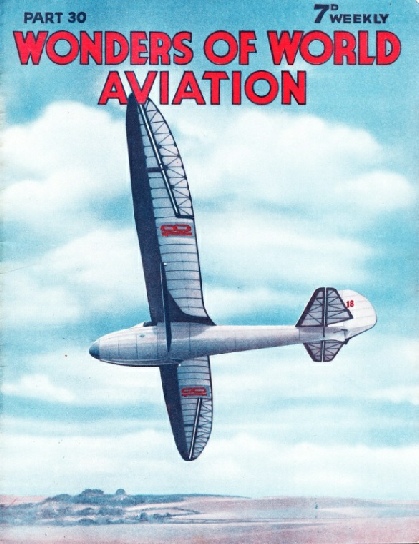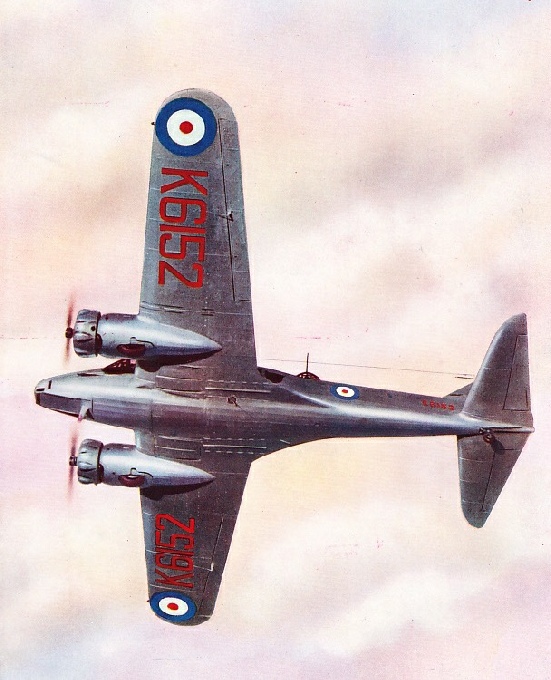
© Wonders of World Aviation 2015-


Part 30
Part 30 of Wonders of World Aviation was published on Tuesday 27th September 1938, price 7d.
This part included a colour plate showing an Avro Anson. This was one of the illustrations in the article on Trainers of the RAF.
The Cover
This week’s cover shows one of the gliders competing in the National Gliding Contests held at Dunstable, Bedfordshire, in July 1938. At these contests, on July 9-10, a world record for two-seater gliders was made by Flight Lieut. W. B. Murray and J. S. Sproule, who remained in the air for 22 hours 13 minutes 35 seconds.

Contents of Part 30
Pioneers of the Parachute (Part 2)
The concluding part of this chapter describing the different technique needed when parachuting from aeroplanes and some of the pioneering parachutists.
The article is concluded from part 29.
Jersey Airways
The oldest constituent members of the British Empire - the Channel Islands - are connected with England by the newest form of transport. Five air routes connect the south coast of England with the Channel Islands and they are described in this chapter.
This is the fifteenth article in the series on Air Routes of the World.
The French Air Force
Historical associations bind the Royal Air Force and the French air force closely together. The early development of both services took place under the stress of the war of 1914-18 and each helped the other with men and materials. In this chapter, the development of the French air force is described. In particular how the Armee de l’Air has been completely reorganized in recent years.
This is the second article in the series Air Fleets of the Nations.
Experiments with Ornithopters
An ornithopter is a wing-flapping device designed to imitate the flight of a bird. This chapter describes a number of ingenious devices designed to imitate the flight of birds.
Famous French Partnerships
Record-making and long-distance flights by French aviators have produced some notable partnerships. Teams of pilots of proved ability performed nearly all of the various flights. This chapter describes some of these historic flights over long distances and in closed circuits.
Trainers of the RAF
Training aircraft in the RAF are used to train pilots how to fly and navigate, but also how to fight. Some of the trainers used for elementary tuition are similar to trainers used in flying clubs and schools, but the advanced trainers are nearly the same as certain Service aircraft. Three classes of trainers: primary, single-engined and twin-engined, are used to train British pilots.
The Avro Anson (colour plate)
The Avro Anson
THE AVRO ANSON is a twin-engined low-wing monoplane used for training pilots who are to go to bomber squadrons and who will fly other twin-engined Service aircraft. It is used also as a Service type for coastal reconnaissance work. Each of the Armstrong Siddeley Cheetah IX radial air-cooled engines develops 310 horse-power at 2,100 revolutions a minute at 6,000 feet. Each engine installation is entirely interdependent, with its own petrol and oil tanks. On top of the fuselage and behind the cabin is the rear gun position which is equipped with an Armstrong Whitworth totally-enclosed rotating gun turret. A Lewis gun is used in this position.
This colour plate previously appeared as the cover design to Part 16.
Flying Boats and their Work (Part 1)
The flying boat is the air equivalent of the ocean liner. This chapter describes the service and commercial uses of large aircraft that operate from water. This article is concluded in part 31.
